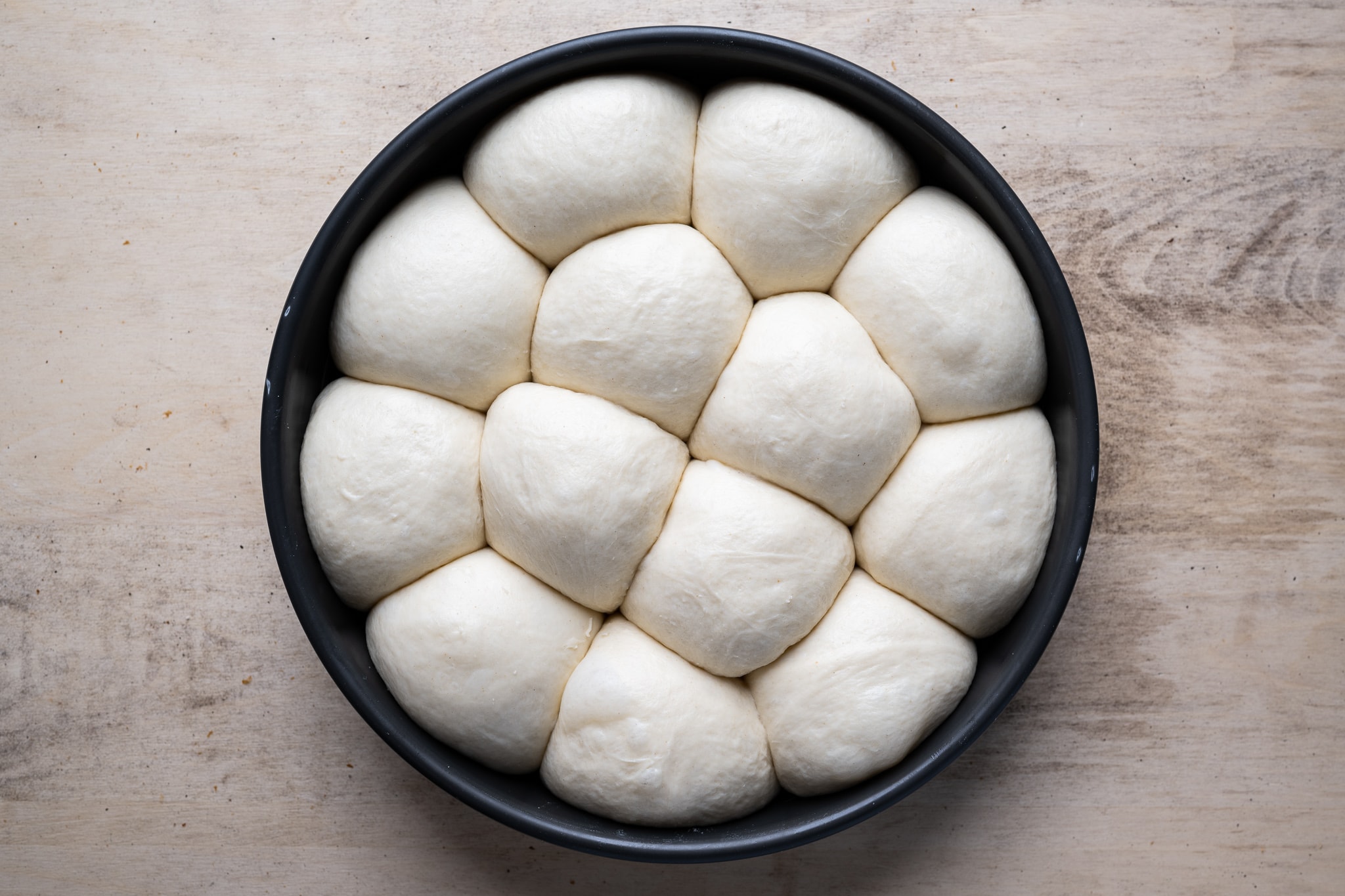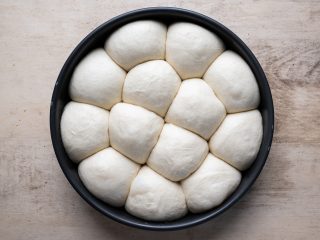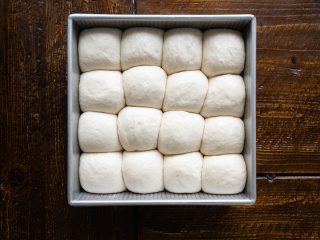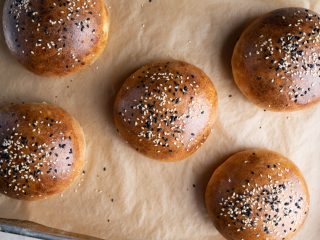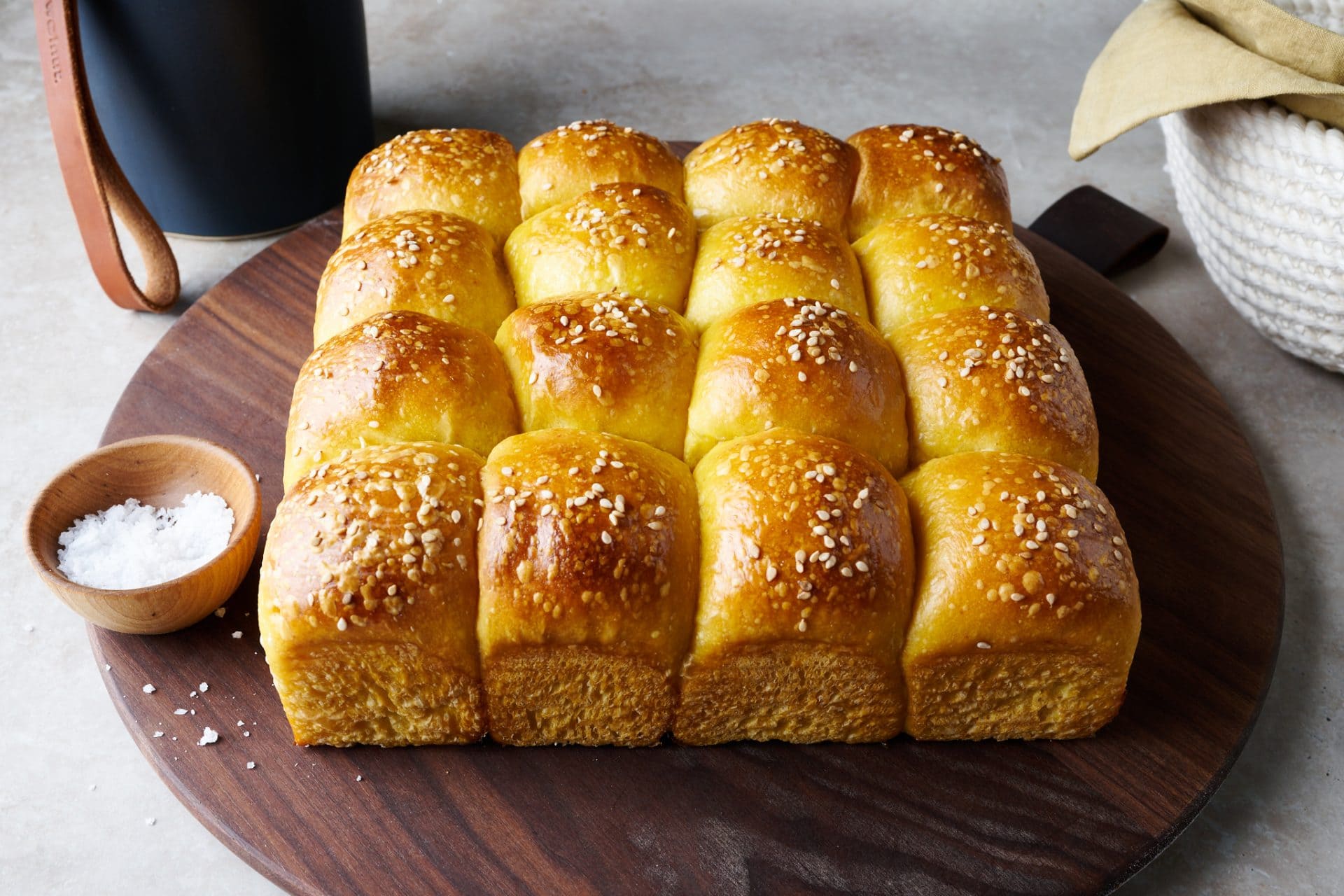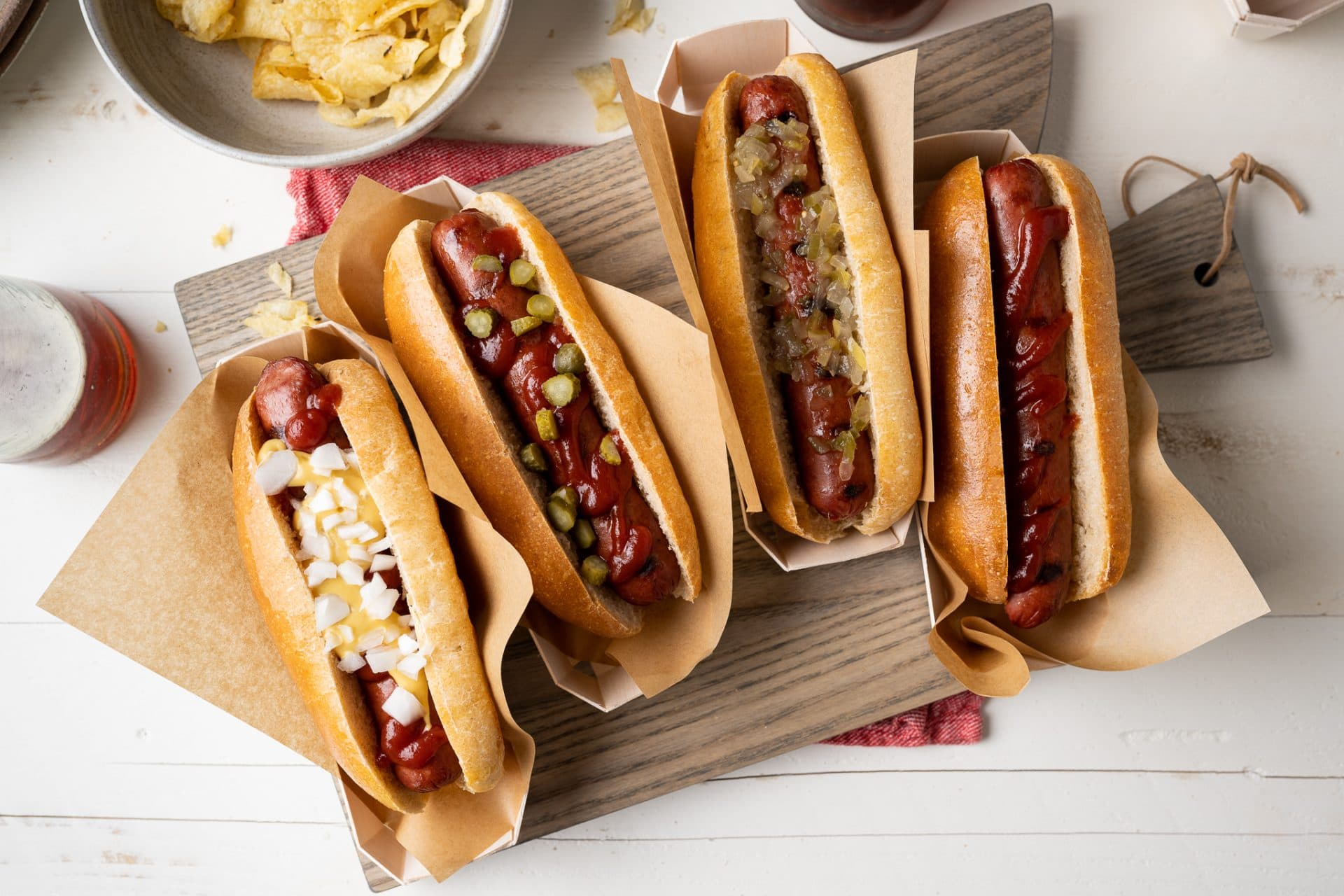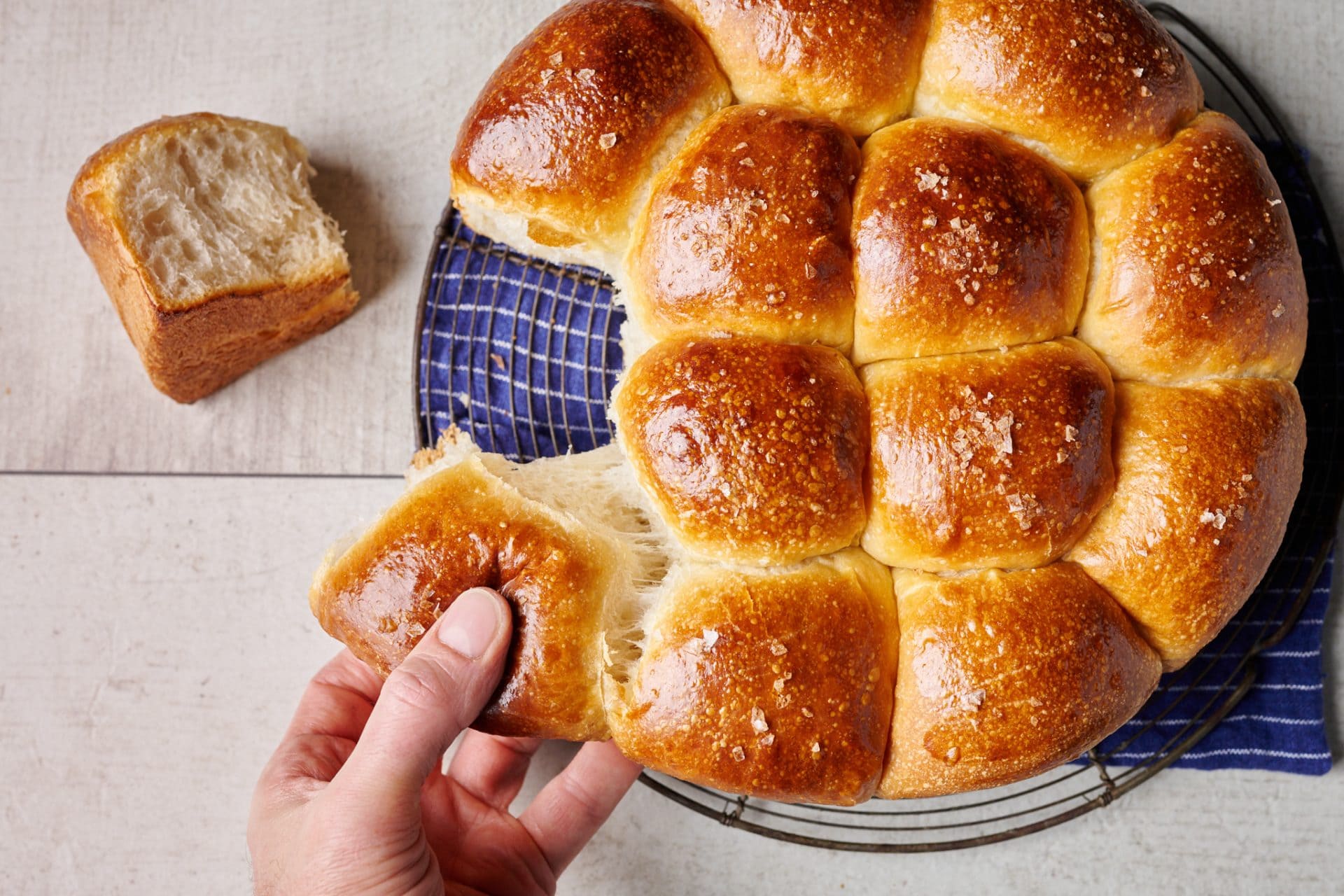Shaping buns and rolls requires a slightly different approach than a standard loaf of sourdough bread. Typically, dough weights are much smaller, and it's also usually enriched with butter and sugar. This makes for a softer dough that can be challenging to handle, depending on the percentage of these ingredients. This guide will go into my approach to shaping buns and rolls, the pans I like to use, and a few other tips and tricks I've discovered along the way.
While there might be some challenges to making sourdough buns and rolls, they're worth the effort. And I feel like once you get the hang of handling the soft dough, shaping becomes quick and effortless.
What's The Difference Between A Bun and a Roll?
Buns and rolls are very similar, and the same enriched dough can often be used to make either. Rolls are typically proofed and baked closer together for a softer, “pull apart” result. This makes them great for dipping or eating alongside other food. On the other hand, buns are proofed with space between them, which makes them crustier. Buns are made to be filled and are great for supporting ingredients and making hamburgers and egg sandwiches.
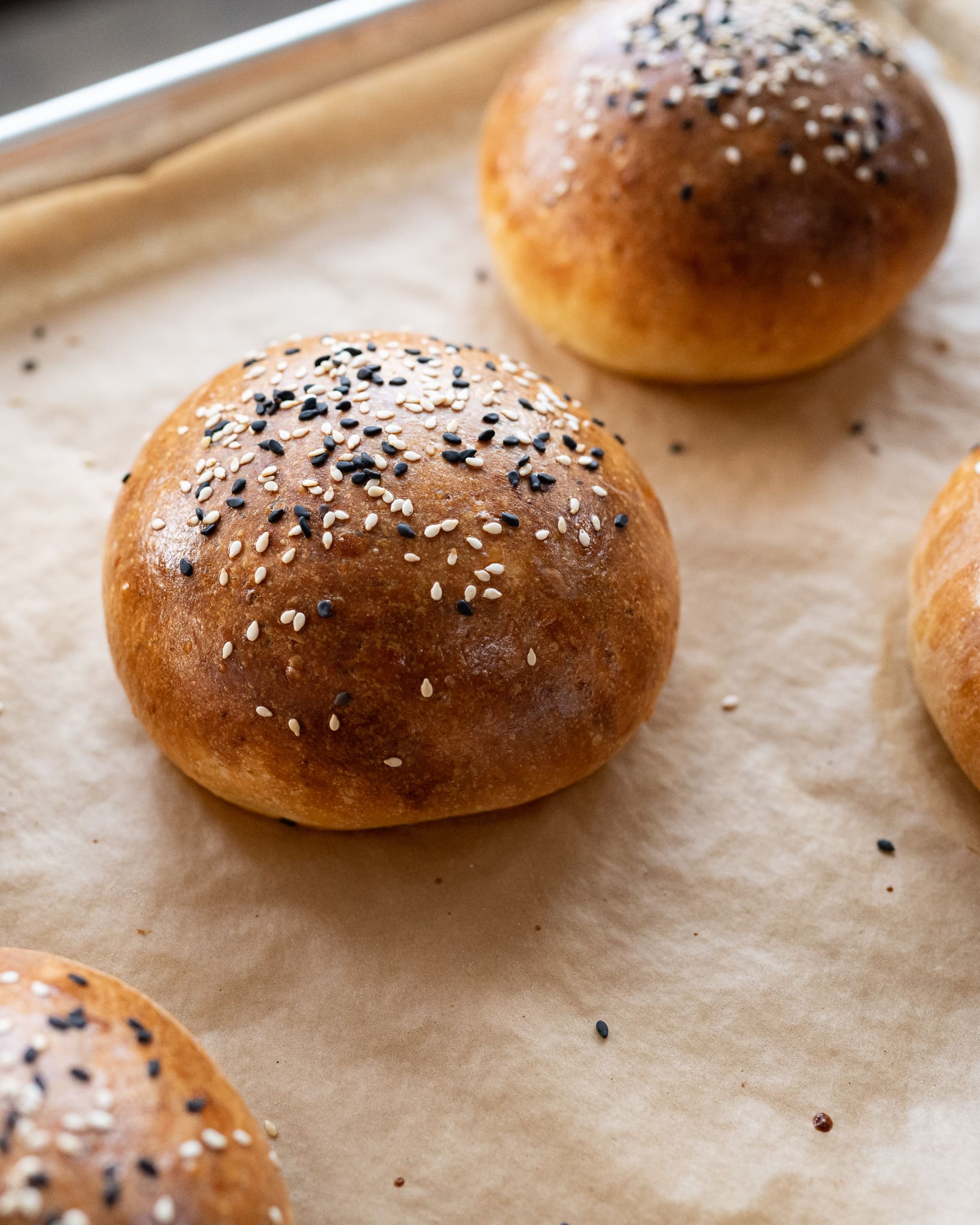
What Flour Should I use for Buns and Rolls?
Often, high-protein white flour or all-purpose white flour is used as the base flour for a bun or roll. A high percentage of white flour will result in the softest and lightest bun or roll possible. However, using a percentage of whole wheat, whole spelt, durum, or other ancient grains can bring added flavor and texture.
The Best Pans for Making Buns and Rolls
Over the years, I've found the following pans best for sourdough buns and rolls. They're nonstick (although I still butter the interior), extremely durable, and have lasted so many bakes in my home kitchen without giving up.
LloydPans 10×2.25-inch round pan.
These LLoydPans are nonstick and conduct heat incredibly well, browning the bottom and sides of whatever is inside just as well as the top. They're made in the USA and are highly durable. This pan is shown holding fourteen 85g rolls (they're large).
This 8×8-inch USA Pan is great for packing in smaller, 65-gram rolls.
The pan has a natural nonstick liner, which makes cleanup a breeze. This pan is shown holding sixteen 65-gram rolls.
Nordic Ware Aluminum Half Sheet
I use these Nordic Ware half-sheet pans (18 x 13-inches) lined with parchment paper for buns. These conduct heat very well and are spacious enough to hold large buns. This pan is shown holding five 120g hamburger buns.
Shaping Buns and Rolls, Step by Step
Shaping buns and rolls is a very similar process. I first divide the dough in bulk fermentation into smaller pieces, then shape the dough immediately and place it into its proofing pan.
If your dough is very sticky, place the bulk fermentation container into the fridge for 15 minutes.
If the dough is very slack and sticky, I like to place the bulk fermentation container in the fridge for 15 minutes or until the dough is slightly cool and firm. This makes shaping easier and means less flour is needed for your work surface.
Using your bench knife can minimize the dough sticking to your fingers when dealing with soft, enriched dough (dough with butter, egg, and/or sugar).

As you can see above, the process is simply taking a piece of divided dough, rounding it with your bench knife or hand, then pushing the dough against the work surface to create tension on the outside of the bun or roll.
It's essential with buns and rolls to develop a uniform and tight exterior skin on the dough. Use the side of your hand to push the dough as it slightly anchors to the work surface (see below).

How to Proof Buns and Rolls
Cover your baking pan or sheet with large reusable plastic to prevent a skin from forming on the dough during proofing. I like to either puff up the bag with air and then quickly seal it shut or use a tall cup inside it to prop it off the dough (as seen below).
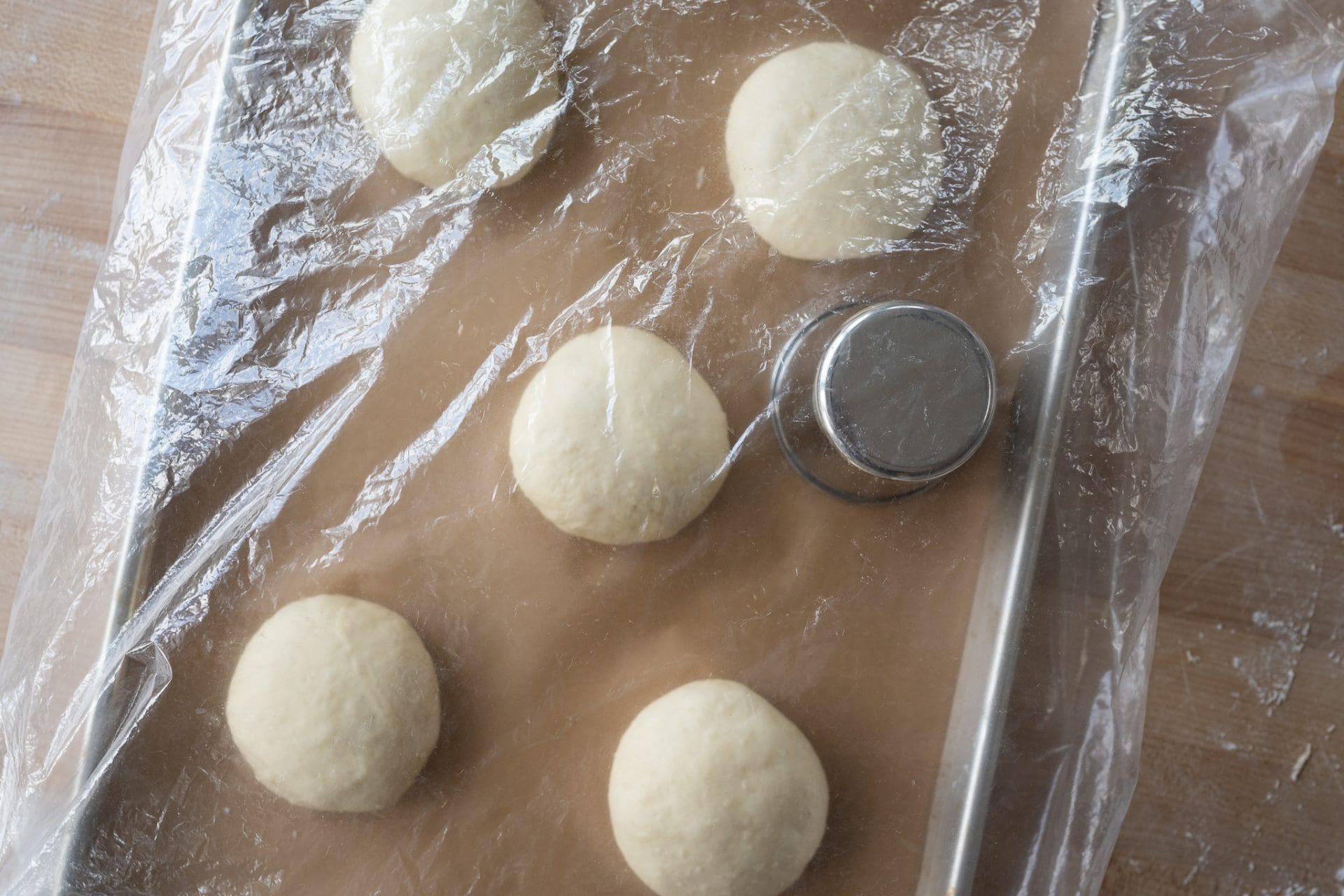
Watch Me Shape Buns and Rolls
The video below shows me shaping my Super Soft Sourdough Rolls, a dough enriched with butter, sugar, and a tangzhong base. The dough is relatively soft; I use my bench knife to help shape the sourdough buns into a tight shape.
When shaping sticky and soft buns or rolls, it's helpful to place the dough in the fridge for 15 minutes to firm up before shaping, as discussed earlier.
What's Next?
If you want to shape bread dough into other round shapes, check out my boule shaping guide or batard shaping guide for techniques for shaping larger loaves.
Then, check out these buns and rolls recipes to use your new shaping skills!


